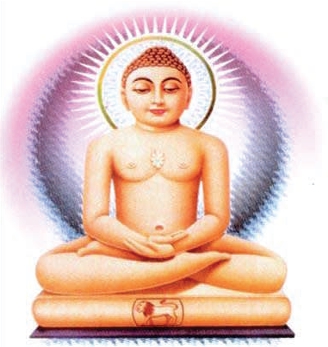
History and Doctrines of Murtipujaka Jains
1. Doctrines
Murtipujaka means 'image-worshipping,' and includes both Shvetambaras and Digambaras, so we have Shvetambara Murtipujakas and Digambara Murtipujakas. Murtipujakas are also known as Deravasis.
This is a cult centred on temples with puja, worship, of Jina-images, other deities, yakshas and yakshis, and other celestial figures in the Jain pantheon (see Jainism). There are large numbers of Jain temples throughout India and overseas. The holy mountain of Satrunjaya has nearly one thousand temples and shrines. Some Jain temples are extraordinarily elaborate and beautiful and through their symbolism express the doctrines of Jainism.
In Jain doctrine an important social tendency to acquire is prabhavana, illumination or glorification of the doctrine. Actions such as building temples, setting up Jina-images, going on pilgrimages, and making donations to hospitals and animal sanctuaries, 'illuminate' the Jain religion to the world and do good to others. Medieval sculptures show donors offering money-belts or other elaborate gifts. Jina-bhavana,building a temple or hall for an image, is one of the seven punya-ksetras, fields of merit. Such meritorious activities can result in rebirth in a heaven or even becoming a Jina. This explains why so many Jain temples and shrines are built.
2. History
Temples and images are eternal in the Jain tradition, being involved in Jain cosmography. On the continent of Nandishvara, the eighth island of the Middle World and visited only by the gods, there are fifty-two temples with Jina-images that have existed for eternity and are regularly worshipped by Indra and other gods. There are other eternal Jina-images all over the universe, in heavens and on top of mountains. The Universal History of the Jains says that Bharata, first emperor of this world age, set up many images millions of years ago. One of these was of Rishabha, the first Jina and his father, on Mount Satrunjaya. Dundas cites an extraordinary account by Muni Bhadrankaravijaya of ancient Mahavira images found in Australia and Jain temples in Mecca and Medina which supposedly provide historical evidence of how ancient and widespread Jainism is and its eternal image-cult (Paul Dundas, The Jains, London 1992, p. 174).
The ancient city of Mathura was a great Jain holy place from the fourth or third century BCE and provides important evidence of early Jainism. Jina-images have been excavated as well as early temples. At Mathura is a shrine to a Jina dating to the second century BCE. Jina-image worship was therefore an important part of Jainism from the very earliest times. Inscriptions from the first century CE at Mathura show that lay people were installing images for monks. Though monks and nuns cannot have any contact with the images because of a lack of washing, they are often working in the background to inspire lay people to build temples and install images.
Jain ascetics often lived in caves and the cave temple is probably derived from this. Examples of both ascetic cave cells and cave temples can be seen at the extraordinary Udayagiri and Khantagiri Hills in Orissa. This site was shared with Buddhist monks, as were other cave monasteries such as Ellora which also included Hindu ascetics. The temple in Indian architecture then evolved out of the cave temple. There are common elements in Jain, Buddhist, and Hindu architecture. The Jains share with the Hindus the tower, symbolic of Mount Meru, for example.
Through this century Jainism has grown outside India. In 1926 a Jain temple was built in Nairobi and one in Mombasa in 1963. More recently, in Leicester, England, the largest Jain temple outside India has been constructed.
Adherents: Main centres: